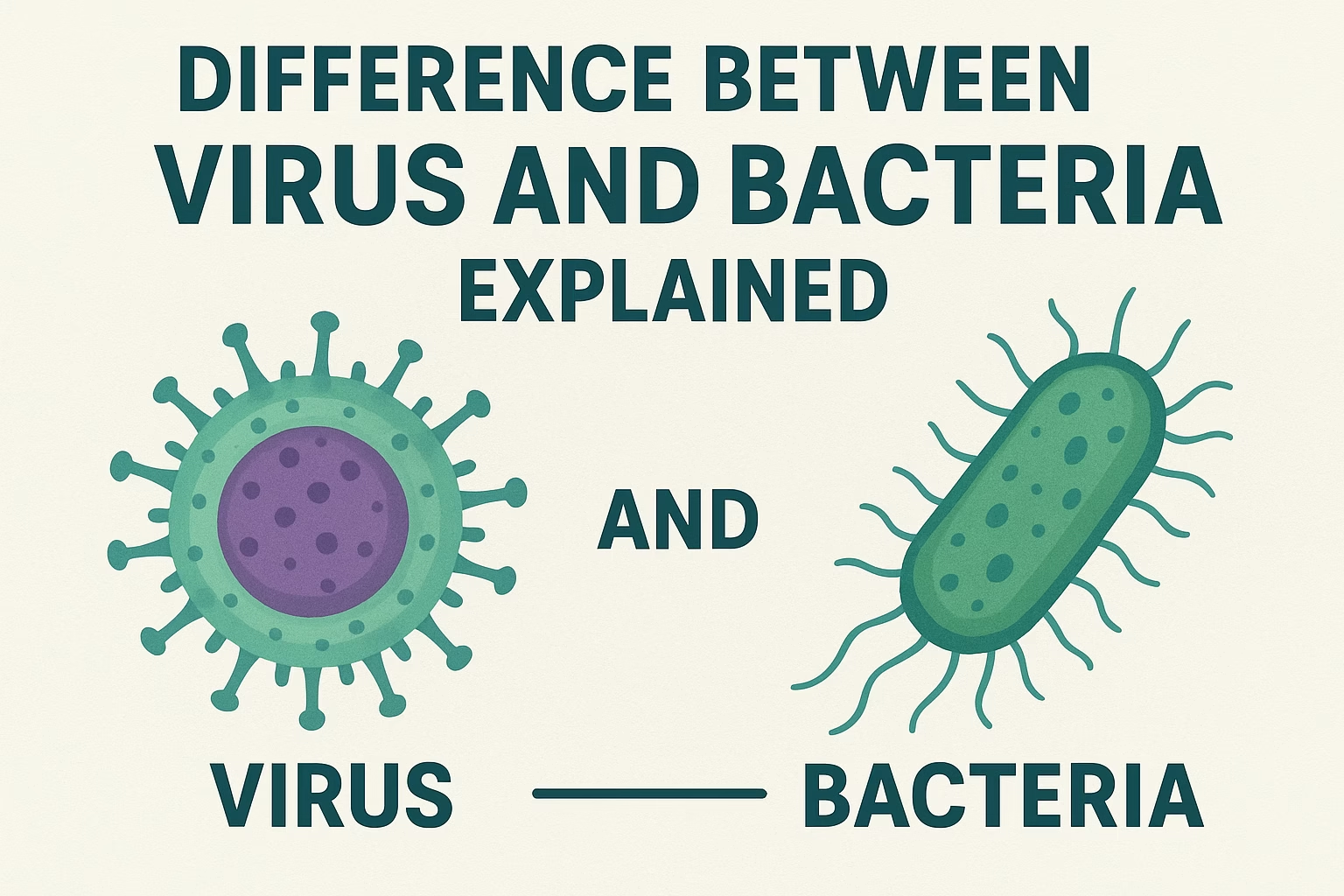🦠 Difference Between Virus and Bacteria Explained
You’ve probably heard about viruses and bacteria, especially during flu seasons or outbreaks. But do you know how they’re actually different?
Although both can make us sick, viruses and bacteria are completely different life forms. Let’s break down their differences, how they spread, and how your body fights them.
🧫 What Are Bacteria?
Bacteria are living microorganisms made of a single cell.
They can live almost anywhere — in the air, water, soil, or even inside your body.
Some bacteria are good and help in digestion, while others can cause diseases like tuberculosis or food poisoning.
- Size: About 0.2–2 micrometers
- Structure: Have a cell wall, cytoplasm, and DNA
- Reproduction: Multiply by dividing themselves (binary fission)
- Treatment: Can be killed or controlled with antibiotics

🧬 What Are Viruses?
Viruses are much smaller than bacteria and cannot live or reproduce on their own.
They need a host cell — like a human or animal cell — to multiply.
Once inside a cell, a virus uses the cell’s machinery to make copies of itself. This is why it’s hard to destroy viruses without harming the body’s own cells.
- Size: Around 0.02–0.3 micrometers
- Structure: Contains genetic material (DNA or RNA) inside a protein coat
- Reproduction: Only inside living cells
- Treatment: Treated with antiviral drugs or vaccines (not antibiotics)

🔬 Key Differences Between Virus and Bacteria
| Feature | Virus | Bacteria |
|---|---|---|
| Living or Non-living | Not truly living | Living organism |
| Cell Structure | No cells | Single-celled |
| Size | Smaller | Larger |
| Reproduction | Needs host cell | Can reproduce independently |
| Treatment | Antiviral or vaccine | Antibiotics |
| Example Diseases | Flu, COVID-19, HIV | Typhoid, TB, Pneumonia |
🧠 Can Both Be Helpful?
Yes! Surprisingly, not all bacteria are bad.
- Good bacteria in your intestines help digest food and produce vitamins.
- Viruses can sometimes be used in science to deliver useful genes — a process known as gene therapy.
So while both can cause diseases, they also play vital roles in nature and medicine.
⚕️ How to Stay Safe from Harmful Ones
Here are a few science-backed tips:
- Wash your hands often with soap and water
- Avoid sharing food and drinks during illness
- Get vaccinated regularly
- Eat probiotic-rich foods to maintain healthy gut bacteria
- Keep your immune system strong with sleep and nutrition
💬 Conclusion
Both viruses and bacteria are microscopic, but they differ in structure, behavior, and treatment.
Understanding their differences helps us know why antibiotics work on bacteria but not on viruses, and how vaccines protect us.
In short — bacteria are independent living organisms, while viruses are tiny invaders that can’t live without us.
❓ Frequently Asked Questions
Viruses are not living organisms and need a host cell to reproduce, while bacteria are single-celled living organisms that can reproduce on their own.
No. Antibiotics work only on bacteria, not on viruses. Viral infections need vaccines or antiviral medicines.
No, many bacteria are beneficial — such as those that help in digestion or protect against harmful microbes.
Viruses are much smaller than bacteria — some are even 100 times smaller.
Yes, certain viruses are used in medical research and gene therapy to treat genetic disorders.



Thank you for the good post.
Thanks Chris!🤗for engaging with us
You’re welcome! I appreciate your reply.